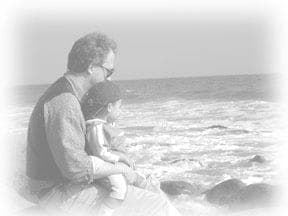
-----
XRF coating thickness measurements -calibration for thin gold
1998
Q. I am interested in accurate XRF coating thickness measurements for AU/NI/CU in the range 0,07-0,35 micrometers AU and 1,5-5 micrometers NI. My XRF measuring system is calibrated with samples beginning with 0,45 micrometers AU.What standards should I order to get accurate readings? What is the influence of the plating method? How should I write the part specification in order to get a good correlation between my measurements and the supplier's measurements?
Thank you for the opportunity to address this forum.
gaby
Gabriela B [surname deleted for privacy by Editor]A. Gaby,
These are extremely thin Au surfaces and quite thin Ni. But it sounds do-able. Most XRF standards are foils that are glued into the handlers, but your thicknesses may be too thin. One of the XRF standards suppliers will custom make you a standard set. It's not so expensive. Just call them and discuss your concerns. They are very helpful. More important than the thickness will be the length and width of the surface to be analyzed. Circles of less that 3 mils diameter require special collimators to be special ordered. When you talk to the manufacturer, be sure to completely describe the substrate, as it can interfere. You can send the supplier a sample as well...and let them figure it out. After all, what do you pay them for anyway?
Regards,
Dave

Dave Kinghorn
Chemical Engineer
SUNNYvale, California
1997
|
Who are the XRF manufacturers for Thickness measurement? BC ChanSdn Bhd - Malaysia 2000
Ed. note: Please see our Directory of Test Equipment for thickness measurement devices. While it is commendable to support the site sponsors, do you feel supporting your readers with complete information would be beneficial to them? Eastern Applied Research, for example, offers new and USED XRF analyzers for thickness -- that may be a benefit to the readers. S. KramerEastern Applied Research - Lockport, New York USA February 17, 2011
Still, we'll give your way a try: Please go ahead and advise Mr. Chan of the names of several XRF suppliers servicing Malaysia so he has the complete information you say he needs. Chinese suppliers are probably less expensive, so please include at least one of them. Thanks! Regards,  Ted Mooney, P.E. Striving to live Aloha finishing.com - Pine Beach, New Jersey Ted is available for instant help or longer-term assistance. February 17, 2011 |
Cost comparison for XRF standards
Q. I am sourcing for a 0.05 µm AU standard foil for XRF machine calibration.
So far found 2 quotes: 1st quote at USD 500 per unit, 2nd quote at USD 1.5k per unit (3 times more expensive than the first quote).
Appreciate if anyone could advise me:
1. Why the price of standard foil (with same thickness) could differ in such a big price range?
2. How are these standard foils calibrated during manufacturing? The cost difference is caused by the manufacturing method or calibration method?
Thank you.
FPCB finishing engineering - Melaka, Malaysia
December 23, 2014
Ed. note: per discussion above, please don't suggest vendors unless you suggest several.
|
A. Hello Ivy, Process Engineer - Phoenix, Arizona USA December 26, 2014 A. Hi Ivy, - Penang Malaysia December 26, 2014 December 28, 2014 A. Hi Ivy Lim, |
Q. Hello Mark, Cheah & Harry,
Appreciate your response to my inquiry!
Both quotes were provided by the manufacturer's regional sales representative in Malaysia, standard foil in 1st quote (with cheaper price) will be manufactured in Korea and the foil in 2nd quote will be manufactured in Germany. Both manufacturers shall provide a certificate of compliance for the foil which is valid for 1 year only. For continuous use in subsequent years, I need to pay (again, big difference in the cost quote by the two manufacturers), and resend to the original manufacturer to revalidate the foil thickness. Assuming I purchased both foils and want to do re-validation, both manufacturers are not agreeing to do for their competitor's foil. Hence, kindly share your opinion:
1. Is it a "must" to send the foil for manufacturer revalidation on yearly basis. Do you practice this for your foils? If I didn't do it, am I violating ISO 9001 compliance?
2. Without using my XRF machine, is there any external laboratory which could do the foil thickness validation without concerning the foil's origin manufacturer? So that I could send both foils to this neutral laboratory for a fair thickness comparison?
Thank you.
- Melaka, Malaysia
December 28, 2014
A. Hello again Ivy,
It is probably mandated by the certification your company holds to have the standards verified on an annual basis. I am not sure of the verification frequency, but it will be in your documents. It is not necessary that you send the standards back to the mfg. There are independent labs that specialize in calibration / thickness measuring verifications. Insist that they send you certs upon shipping them back to you. The reason the mfg wants you to use them for the verifications is because they are in business to make more money. The standards come in a protective case and must be kept in those cases. I have seen them just lying around the XRF machine with scratches and worn down. Hope this helps and have a Happy New Year!
Process Engineer - Phoenix, Arizona USA
December 30, 2014
Q, A, or Comment on THIS thread -or- Start a NEW Thread
